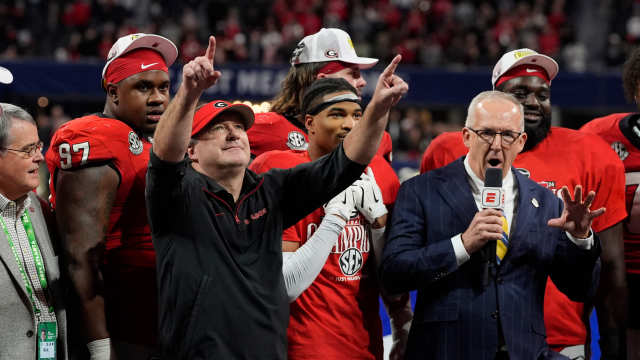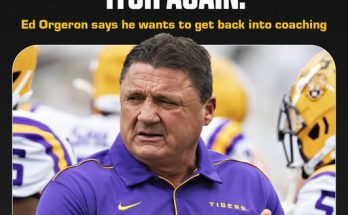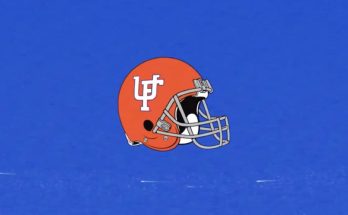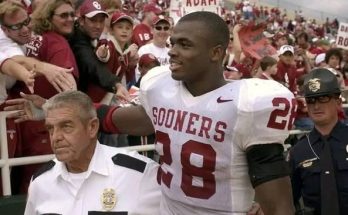The world of college football is no stranger to drama, high-stakes recruitment battles, and big-money deals. But even in this era of NIL (Name, Image, and Likeness) agreements and multi-million-dollar valuations for elite players, the case of top quarterback recruit James “JT” Holloway stands out. Holloway, a 6’4″, 220-pound signal-caller out of Houston, Texas, has been projected to command a staggering $2.7 million in NIL deals before he even takes a snap at the collegiate level. With the University of Georgia considered the frontrunner for his commitment, the stakes have never been higher. However, a major setback—a devastating knee injury—has left both Holloway and Georgia at a crossroads, unsure of what the future holds.
The Rise of JT Holloway
From the moment Holloway stepped onto a football field in his freshman year at Westfield High School, scouts saw something special. With a powerful arm, elite mobility, and an uncanny ability to read defenses, Holloway quickly became one of the most sought-after quarterback prospects in the country. By his junior season, he had thrown for over 4,500 yards, 50 touchdowns, and only five interceptions, leading his team deep into the Texas state playoffs. His dual-threat ability made him a nightmare for opposing defenses, and his composure under pressure drew comparisons to NFL stars like Patrick Mahomes and Caleb Williams.
As the NIL era exploded, Holloway’s stock rose exponentially. With endorsements from national brands, social media influence in the millions, and a natural charisma that made him a marketer’s dream, analysts pegged his NIL valuation at an astonishing $2.7 million. Georgia, Alabama, Ohio State, and Texas were all in hot pursuit, but Georgia appeared to have the edge.
Georgia’s Golden Quarterback Pipeline
Georgia, fresh off multiple College Football Playoff appearances and national championships under head coach Kirby Smart, had positioned itself as the destination for elite quarterbacks. From Stetson Bennett’s unexpected rise to NFL-bound gunslingers like Carson Beck, the Bulldogs had developed a winning formula. Holloway was expected to be the next in line—a generational talent capable of leading Georgia to even greater heights.
The buzz around Holloway’s potential commitment reached fever pitch in late February, with reports indicating he was leaning heavily toward Georgia. NIL collectives, boosters, and alumni had already begun structuring deals that would ensure his financial security before even stepping onto campus.
The Injury That Changed Everything
Then came the unthinkable. In the Texas State Championship game—a contest that could have cemented his legacy—Holloway took a brutal hit on a designed quarterback run. His knee twisted awkwardly under the weight of multiple defenders, and he immediately crumpled to the turf. Silence fell over the stadium as trainers rushed onto the field. The initial fears were confirmed: a torn ACL, MCL, and meniscus. A devastating injury that could sideline him for an entire year and potentially impact his long-term mobility.
The timing couldn’t have been worse. With National Signing Day approaching and Georgia’s coaching staff banking on his arrival, the injury threw everything into flux. Would Georgia still honor their scholarship offer? Would NIL sponsors back out? Would Holloway’s draft stock take a hit before he even played a college down?
Georgia’s Dilemma
Georgia had been all-in on Holloway, shaping their future quarterback room around his arrival. But the brutal truth of college football is that programs cannot afford to wait indefinitely. With other top quarterbacks still available in the transfer portal and in upcoming recruiting classes, the Bulldogs had to make a difficult decision: stick with Holloway through his recovery, or pivot to another prospect who could contribute sooner.
Head coach Kirby Smart, known for his loyalty to players but also his ruthless competitiveness, now faced an agonizing dilemma. Does he gamble on Holloway’s return to full health, risking a major hole at the quarterback position if things don’t go as planned? Or does Georgia move on, potentially alienating one of the most talented prospects in years?
The NIL Fallout
The injury didn’t just impact Holloway’s football future—it also sent shockwaves through the NIL ecosystem. Brands that had been eager to invest in the young star suddenly grew hesitant. Some deals had performance clauses, meaning that if Holloway couldn’t play, he wouldn’t get paid. Others, however, were structured around his potential rather than immediate on-field production, keeping some financial support intact.
For Holloway, this was a wake-up call about the precarious nature of NIL deals. The system, still in its infancy, does not offer the same financial guarantees as professional contracts. Unlike NFL rookies, who sign deals that are at least partially guaranteed, college players still operate in a world where injuries can instantly change their earning potential.
Holloway’s Decision: Fight or Flip?
Now faced with the biggest decision of his life, Holloway has two primary options. The first is to stay the course with Georgia, trusting that the program will honor its commitment and allow him to recover at his own pace. The second? Reopen his recruitment and explore options with programs that might be willing to invest in him long-term despite the injury. Schools that missed out on him originally—such as Texas and USC—could see this as an opportunity to swoop in and offer him a fresh start.
There’s also a wild card option: skipping college football altogether and taking a path similar to former five-star quarterback Jaden Rashada, who initially made waves in NIL negotiations before opting for an unconventional career route. With alternative leagues like the XFL or the newly formed UFL offering professional opportunities, Holloway could theoretically take a year to rehab while still earning money through endorsements.
The Future of NIL and High-Stakes Recruiting
Holloway’s situation is not just a personal crisis; it’s a case study in the risks and rewards of modern college football. The NIL landscape has created immense opportunities, but it has also added unprecedented volatility. Five years ago, an injury like this might have simply meant a delayed college debut. Now, it impacts million-dollar financial agreements, corporate sponsorships, and the entire ecosystem of a powerhouse program like Georgia.
For Georgia, the decision they make regarding Holloway will set a precedent. If they stand by him, it sends a message to future recruits that Georgia is loyal to its players even in adversity. If they pivot to another prospect, it highlights the cutthroat nature of modern recruiting, where financial interests often outweigh individual loyalty.
As for Holloway, his journey is far from over. Whether he suits up for Georgia, takes a different college path, or explores professional alternatives, one thing is certain: his name will be a defining one in the evolution of college football’s NIL era.
One moment, he was on top of the world. The next, he was torn real bad. Now, all eyes are on him to see how he bounces back.



